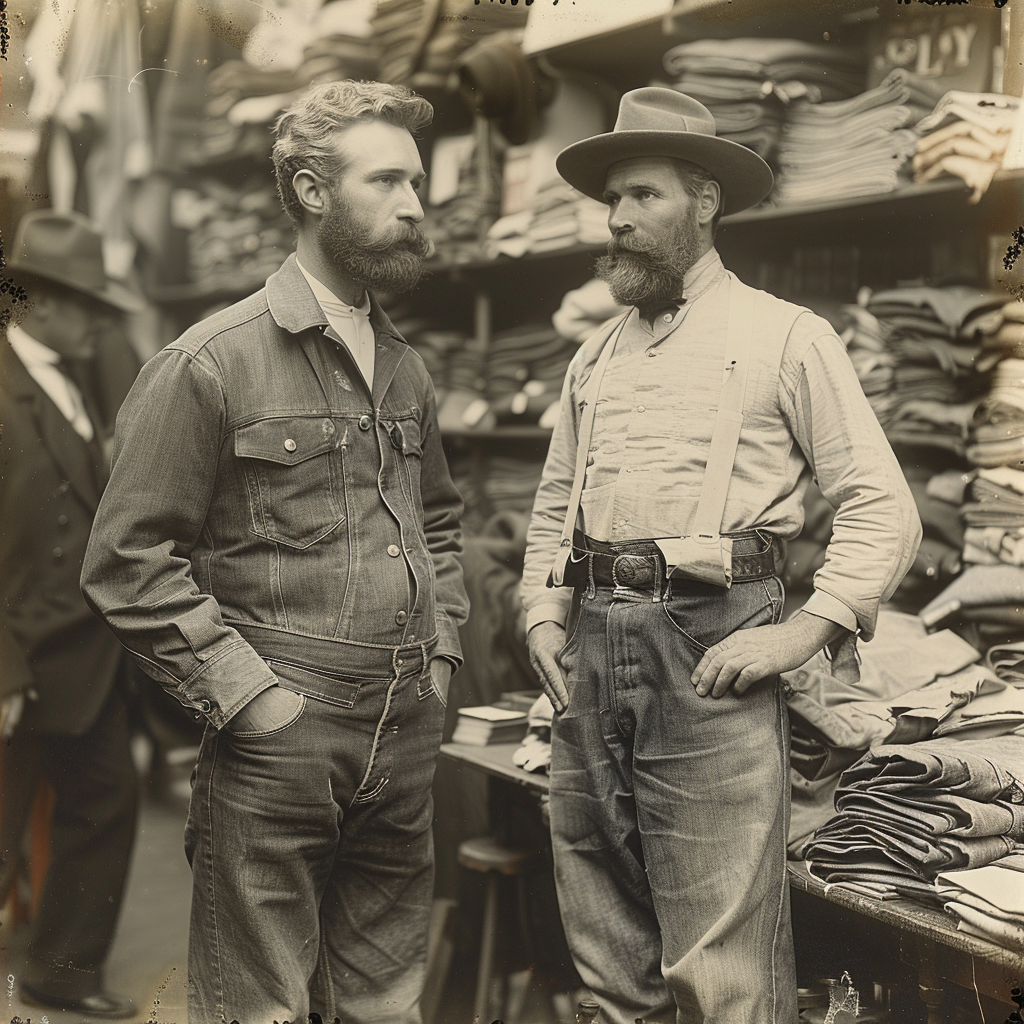The Origin of Blue Jeans: Levi Strauss and Jacob Davis’ Revolutionary Invention
On May 20th, 1873, a remarkable event reshaped the future of fashion and workwear. Levi Strauss and Jacob Davis were awarded a patent for their revolutionary invention, blue jeans. This patent, numbered 139,121, marked the official birth of what would become an enduring classic in the world of apparel. The innovation behind these jeans was primarily driven by the needs of miners during the Gold Rush era, who required tough, resilient clothing to endure the harsh conditions of their work.
Levi Strauss, a German immigrant, initially ventured into the dry goods business upon his arrival in San Francisco. His business acumen and understanding of the miners’ needs led him to collaborate with Jacob Davis, a Reno-based tailor. Davis had been experimenting with reinforcing pants at stress points using copper rivets, a practice that significantly enhanced the durability of the garments. Recognizing the potential of Davis’ approach, Strauss provided the necessary financial backing to secure a patent for this innovative design.
Their patent application described the use of metal rivets at key points such as pocket corners and the base of the fly, which effectively minimized the risk of tearing. This simple yet groundbreaking idea extended the lifespan of the jeans, making them an ideal choice for labor-intensive tasks. The initial reception of these “waist overalls,” as they were initially known, was overwhelmingly positive among miners and laborers, who appreciated the durability and practicality of the jeans.
Marketing efforts soon followed, with Strauss and Davis promoting the robustness and longevity of their product. Historical records, including advertisements from the late 19th century, highlight the emphasis on quality and resilience. The Gold Rush era’s demand for durable work clothing provided the perfect backdrop for the widespread adoption of blue jeans. Primary sources, such as the original patent documentation and contemporary newspaper articles, underscore the significance of this invention. External references, including works by fashion historians, further authenticate the historical account of the 1873 patenting of blue jeans.
The journey of blue jeans from functional workwear to a global fashion staple is a fascinating tale of cultural evolution and economic impact. Initially designed as durable trousers for miners and laborers, the patenting of blue jeans on May 20th, 1873, marked the beginning of a transformative era. These rugged garments, invented by Levi Strauss and Jacob Davis, symbolized the hardworking spirit and individualism of the American West. Over the decades, their practicality and durability led to widespread adoption among various demographics, including cowboys, factory workers, and later, mainstream society.
By the mid-20th century, blue jeans had transcended their utilitarian roots to become a powerful symbol of rebellion and youth culture. Icons like James Dean and Marlon Brando popularized jeans as an emblem of nonconformity and youthful defiance. This shift was not merely stylistic but also deeply cultural, representing a break from tradition and a move towards individual expression. Sociological studies have shown that the adoption of blue jeans by young people in the 1950s and 60s was a form of silent protest against the norms of previous generations.
Today, jeans are a ubiquitous item of clothing, worn by people of all ages and backgrounds around the world. They have been integrated into various fashion trends, from the bohemian styles of the 1970s to the grunge look of the 1990s, and continue to evolve with contemporary fashion. The economic impact of jeans on the clothing industry is immense, with the global denim market valued at billions of dollars annually. Fashion historians and market analysts alike recognize the versatility and enduring appeal of blue jeans, noting their ability to adapt to changing tastes and cultural contexts.
Ultimately, the patenting of blue jeans on May 20th, 1873, paved the way for a garment that would become a universal symbol of comfort, resilience, and style. Their evolution from workwear to fashion icon reflects broader societal changes and underscores the dynamic relationship between clothing and culture.

